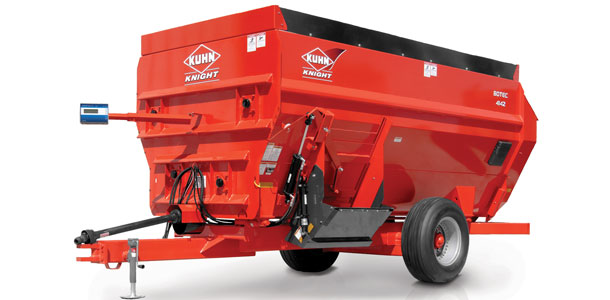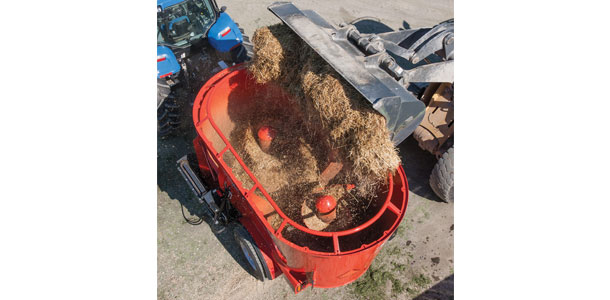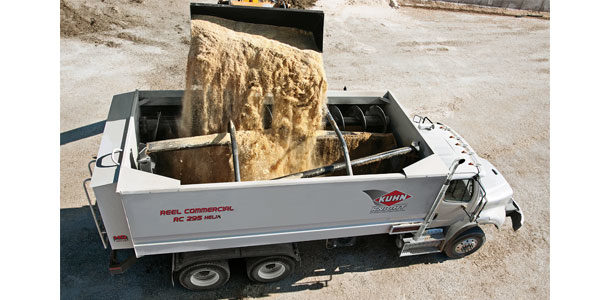Most of us are in the habit of servicing our feeding equipment on a regular basis, whether it is daily or weekly, depending on the hours the equipment is used each day. Greasing drivelines and checking for proper chain tension is a familiar routine for the typical dairy farmer.However, common wear components, such as knives, lead edge scrapers (vertical mixers) and wipers (reel mixers) often go unnoticed and can dramatically impact mix quality and time.
This article will discuss wear items specific to the three types of mixers and how to recognize when they need adjustment or are worn badly enough to require replacement.
Reel mixers
Processing hay with badly worn knives slows down mixing and wastes fuel. Check the upper auger knives, lower auger scalloped roughage knives or round circular disc knives on grain augers. If worn, replace with original equipment manufacturer (OEM) parts for best results. Auger flighting may be worn; badly worn flighting can result in overprocessing of feed ingredients and too many fine particles in the ration. Check scrapers on straight bar reels to see that they are set close to the floor in order to sweep fine grains and minerals properly for optimum mix quality. For machines equipped with Helix reels, the scrapers are located on the front and rear ends of the reel on one specific bar or bat. Additional scrapers located on the front and back walls clean out fine material that may sit between the reel and the walls. Check to be sure the scrapers are intact and in good shape.

Horizontal four-auger mixers
Four-auger mixers share many of the same knife configurations as the reel mixers. Additionally, these machines have angle iron or rasp bars that provide a surface for the knives to shear material against. Make sure these irons or bars are in good shape. Check to make sure cross bolts holding the augers to the stub drive shafts are properly torqued.

Vertical auger mixers
Lead-edge scrapers are very important to proper vertical mixer function. Kuhn Knight VT and VTC series mixers use bolted scrapers that are easily adjusted and are replaceable when excessively worn. Scrapers should be set as closely as possible to the inner wall of the tub without actually touching the walls. Be sure to rotate the augers to make sure clearance exists after adjusting scrapers. Twin-auger machines should have the augers timed for proper transfer of feed between the augers. Kuhn Knight recommends the following timing procedure for the VT and VTC mixers: set the leading edge of the rear auger at the 12 o’clock position and the leading edge of the front auger at the 10 o’clock position. This can be accomplished by disconnecting the driveline from the input shaft to the planetary gearbox underneath, rotating the auger to the desired position and reconnecting the driveshaft. Kicker arms on vertical augers should also be inspected and replaced as needed for optimum feed out rates.
All three styles of mixers will experience wear on the tub and auger troughs over time. Purchasing a new mixer with stainless steel liners will help to preserve the structural integrity of your new TMR mixer by protecting the shell of the mixer from wearing thin. If you choose to not purchase stainless liners when the unit is new, replacement and repair panels are available for most machines.
Taking the time to adjust wear components will ensure that your mixer performs to the best of its capability years after the initial purchase. Keeping the mixer operating at this peak level will help you to prepare the best possible rations for your herd and maximize your feeding efficiency. PD
Troy Moen is a product specialist for Kuhn North America.
PHOTOS
Photos provided by Kuhn North America.







